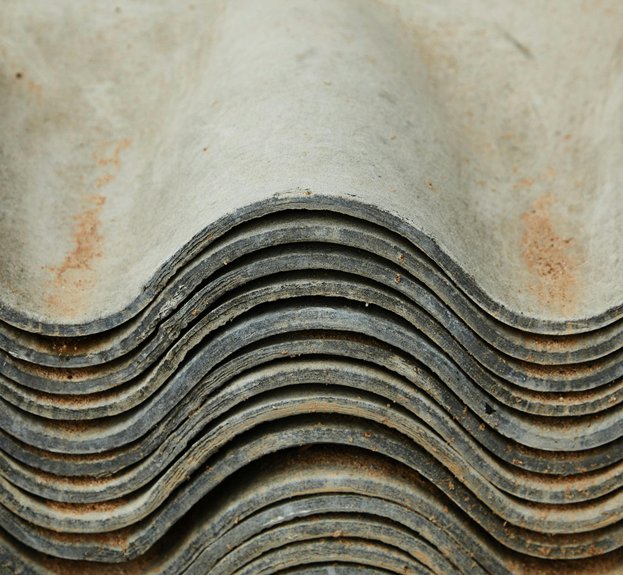When you face roof issues in Oklahoma City, pinpointing the root causes quickly can save you significant expense. Leaks, hail damage, and wind stress are frequent problems that require targeted solutions. Understanding how to inspect vulnerable areas like flashing or shingles and knowing when to repair versus replace is essential. Before you decide on a fix, consider how local climate factors influence your roof’s durability and what preventive steps can extend its life.
Identifying Roof Leaks and Their Causes
How do you pinpoint roof leaks before they cause extensive damage? Start with a thorough leak detection process, focusing on vulnerable areas like flashing, valleys, and chimneys.
Use moisture assessment tools such as infrared cameras and moisture meters to identify hidden water intrusion without invasive methods.
Inspect attic spaces for water stains, mold, or damp insulation, which signal active leaks.
Pay attention to roof material conditions—cracked shingles or worn seals often cause leaks.
Documenting these findings helps you target repairs precisely, preventing costly structural issues.
Remember, early detection through systematic moisture assessment is vital for maintaining roof integrity and avoiding extensive damage.
This methodical approach guarantees you address leaks promptly and effectively in Oklahoma City’s variable climate.
For professional assistance, consider contacting Top View Roofing for expert inspections and repairs.
Dealing With Hail Damage on Shingles
Detecting leaks often reveals underlying hail damage that compromises shingles’ protective layers. When hail impact strikes, it can cause granule loss, cracks, or bruising on shingles, reducing their ability to shed water effectively.
You should inspect your roof systematically after a hailstorm, looking for dents, missing granules, or fractured edges. Minor damage may be repairable, but extensive hail impact usually requires shingle replacement to restore roof integrity.
Prioritize timely assessment to prevent moisture intrusion and structural damage. Working with a professional roofing contractor guarantees accurate damage evaluation and safe removal of compromised shingles.
Addressing Wind-Related Roof Problems
Although wind damage may not always be as visible as hail impact, it can seriously compromise your roof’s structure and performance.
Wind uplift forces can loosen or tear off shingles, exposing your roof deck to water infiltration. You should inspect for lifted or missing shingles after strong winds and secure any loose materials promptly. Ignoring wind-related damage can accelerate deterioration, leading to costly roof replacement.
Proper fastening techniques and high-wind-rated materials help resist wind uplift during installation or repairs. If damage is extensive, a professional assessment is essential to determine if roof replacement is necessary to restore structural integrity.
Addressing wind-related issues early prevents further damage and prolongs your roof’s lifespan.
Managing Roof Ventilation and Heat Issues
When your roof lacks proper ventilation, heat can build up in the attic, causing increased energy costs and accelerated material deterioration. To manage this, you need effective ventilation systems that allow continuous airflow, preventing excessive heat accumulation.
Ridge vents, soffit vents, and gable vents work together to create balanced air exchange, reducing attic temperatures. Additionally, upgrading your heat insulation improves thermal resistance, keeping your home cooler in summer and warmer in winter. Make sure insulation is evenly distributed and free from compression to maximize efficiency.
Regularly inspect ventilation components for blockages or damage, as compromised systems can undermine performance. By addressing both ventilation and heat insulation, you’ll extend your roof’s lifespan, improve energy efficiency, and maintain structural integrity in Oklahoma City’s climate.
Preventing and Repairing Storm Damage
Since Oklahoma City experiences frequent storms, protecting your roof from damage is crucial to preserving your home’s structural integrity.
Start with storm preparedness by inspecting your roof regularly for loose shingles, damaged flashing, and clogged gutters. These maintenance tips help prevent water infiltration and wind damage.
After a storm, conduct a thorough assessment to identify missing or broken shingles, dents, and leaks. Promptly repair or replace damaged components to avoid further deterioration.
Use roofing sealants on minor cracks and guarantee proper drainage to reduce moisture buildup. Additionally, trim overhanging branches to minimize impact damage during high winds.
Following these steps will enhance your roof’s resilience and reduce costly repairs, keeping your Oklahoma City home safe through storm seasons.
Choosing the Right Roofing Materials for Oklahoma City Climate
Because Oklahoma City faces extreme weather conditions ranging from intense heat to severe storms, selecting the right roofing materials is essential for durability and performance.
You should consider metal roofing for its resilience against high winds and hail, providing long-term protection. Metal roofs also offer superior energy efficiency by reflecting solar radiant heat, reducing cooling costs during hot summers.
Additionally, materials like impact-resistant asphalt shingles or clay tiles can withstand storm damage while complementing local aesthetics.
Ascertain the roofing material you choose complies with local building codes and offers proper ventilation to prevent heat buildup.
Conclusion
By regularly inspecting your roof and using moisture detection tools, you can quickly identify leaks and hidden damage. After storms, promptly assess hail and wind impacts to prevent further issues. Address ventilation problems to extend your roof’s lifespan. Choose materials suited for Oklahoma City’s climate to enhance durability. Partnering with professional contractors guarantees precise repairs and maintenance, protecting your home long-term. Taking these steps keeps your roof resilient against common local challenges. For more information on how to schedule your free roof inspection, call us at (405) 543-2920 or visit us online at Top View Roofing.











